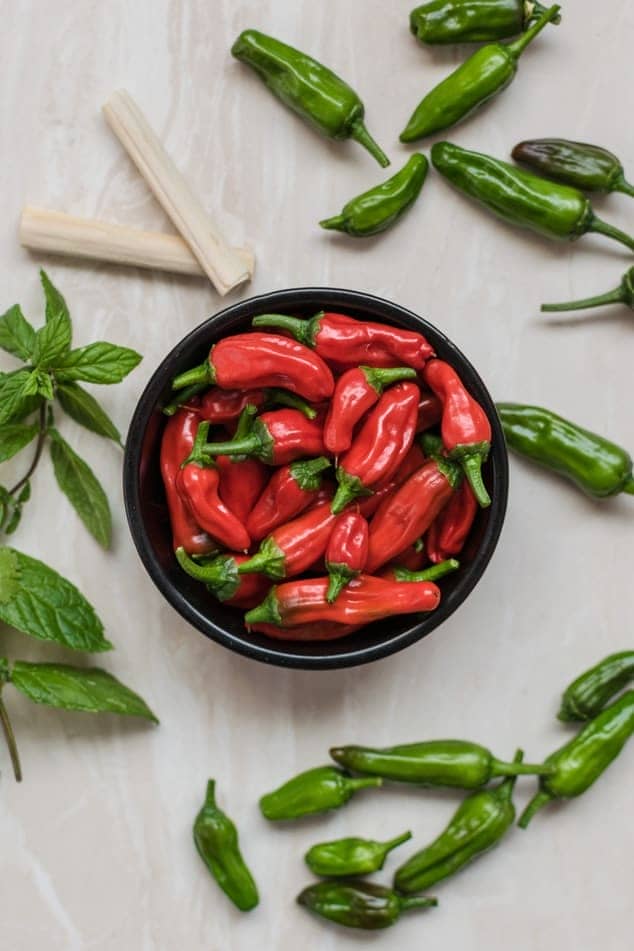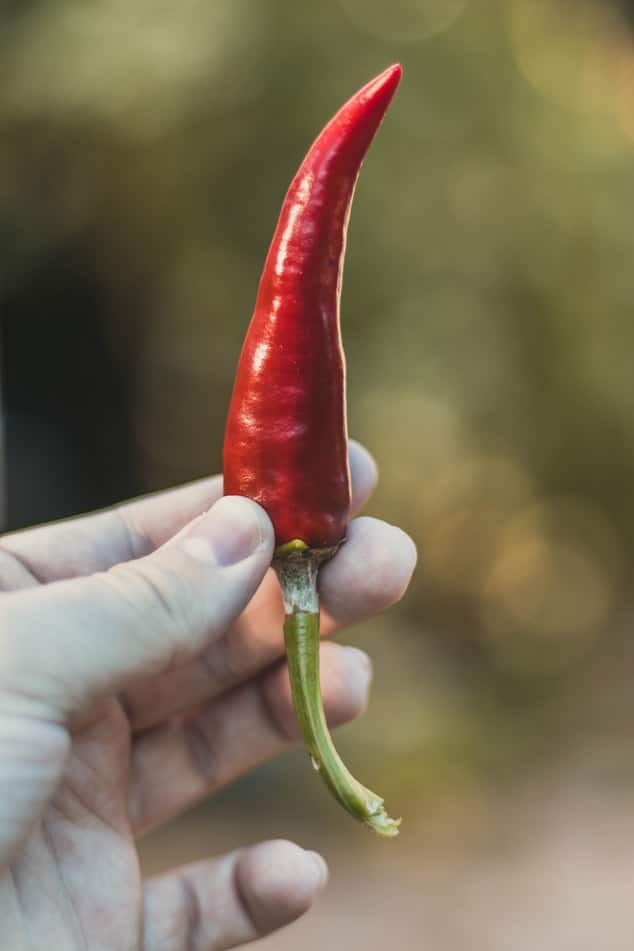Even though not all of us are able to enjoy spicy foods, chili bowl is a meal that is a staple in several national cuisines all over the world. Moreover, this foodstuff is rather versatile since we can easily change the basic ingredients without affecting the taste of the meal.
Thanks to this, this spicy food is appreciated in many countries, but people still wonder how to deal with the chili recipe that requires beans.
What legumes to add? Which ones would not be the best choice? How not to mess up with the dish? We will give answers to all these inquiries!
The Best Beans For Chili
Generally speaking, chili recipes that ask for beans mostly mean kidney legume, pinto beans, and black beans. For an even better effect, we would recommend everyone try out a three-bean chili will all these sorts of legumes.
Naturally, it doesn’t mean one can’t make use of other legumes since chili with beans can include almost any of them. Some people would even go for chili beans but those are true heroes since these legumes are extremely hot and spicy! So unless you are spicesproof, better opt for less extremal variants!
So, if the chili recipe has beans among the ingredients, feel free to opt for one of the following alternatives:
- Green beans
- Navy
- Fava
- Great Northern
- Chickpeas
And if you are headed to cooking a true classic chili, it’s time to take a closer look at the favorites among the legumes that this dish will definitely benefit from.

Pinto beans
These ones can be either purchased canned or dry in a packet. The major distinction is that the canned option is way handier since you will not have to pre-cook them prior to adding to your chili.
If you happened to buy dry legumes, consider that they will first have to be cooked, otherwise, no chili will be possible to make! Fortunately, these Pinto are quite simple to handle so dealing with them will not make trouble.
Since these legumes are very clean initially, no fuss with washing will be needed. Besides, they can be easily cooked in an instant pot or a slow-cooker (in case you don’t feel like fussing with that soaking stuff that takes tons of time!).
As for the legumes that come in a can, they will anyway have to be drained and rinsed to wash off the “sauce” they come with. It will take some time, so be prepared for that.
Black beans

Another top-rate sort of legume is black beans. Thanks to their bold and deep flavor, they pair especially well with other legumes turning the taste of chili even more fascinating and varied!
Black beans, if purchased dry, will have to be soaked and prepared prior to being incorporated into chili, so consider that before you begin cooking!
Kidney legumes
The number three legume for chili is here! These large red beans take second place in a chart of the most popular legumes for this spicy dish, and we can perfectly understand, why.
Kidney legumes are very flavorful, they have plenty of health benefits, and what is most important, they are very easy to work with.
Moreover, we can always find a packet of ready-to-consume beans that need no soaking, preparation, or other manipulations before they can be incorporated into the final dish! Handy and easy as it is!
Generally speaking, any kind of legumes can be used in chili alone, but when they are combined on the same plate, they create a delicious union that will be so pity to miss!
Finally, after reading all this somebody may ask why not just go for actually chili beans instead of fussing with all these. Well, you can of course opt for this alternative, but take into account that chili legumes are sold being soaked in a sauce that is extremely spicy! Since the dish also requires chili powder to be added, the final foodstuff may appear to be too hot for even the most durable and strong gut.
Consider this when choosing legumes, but except for that, feel free to incorporate any legumes you feel like.
How to Make Chili
If you never made this foodstuff, it may appear to be a bit complicated for a newbie to figure out what red chili recipe is better to start with. Shall it be a chili soup or a classic chili recipe? We can tell you only one thing: if this is going to be your first time as a chili-maker, better opt for the quick chili recipe we will suggest below.
Somebody may say it is not the best chili recipe, but this is a simple chili recipe that everyone can deal with which means it is quite effortless to prepare.
So to make this meat and beans chili, ensure you will follow all the steps carefully in proper order:
- Get all the ingredients ready. Make sure you have beef, legumes, olive oil, finely chopped onions, tomato paste, cumin, and garlic powders, pepper (black and cayenne), and meaty broth.
- Start with heating the oil in a pot, and sautee onion in it for five minutes.
- Incorporate flesh and keep on cooking it until the meat turns brown.
- Now add spices and tomato paste stirring the mixture thoroughly.
- Once done, pour the broth inside, add drained and rinsed legumes, and finely cut tomatoes.
- After the mixture is brought to a low boil, reduce the flame to the minimum, and let the foodstuff simmer for half an hour. The more time it has to simmer the more aromatic the dish will be, keep that in mind!
Finally, when the time runs out, remove the pot from the fire and let the chili rest for a while. Serve hot and enjoy!
What Goes With Chili

When the chili is made, a question arises of what to do with it. Of course, to eat, but with what?
In fact, lots of ways exist how we can enjoy a bowl of chili, and eating it as it is counts as well. However, if this is not an option and you’d like something else, try out several other suggestions:
- Use it for stuffed peppers
- Serve with baked potatoes
- Pair with enchiladas or burritos
- Add it to shakshuka
- Or combine with a casserole
As you can see, the chili recipe is easy to match with almost any dish, and some people even manage to eat it with hot dogs!
Chilis Nutrition Guide
After learning the beef chili recipe, some of you will probably become interested in the nutrition value of this foodstuff.
Indeed, a meaty dish with legumes must be very fatty and heavy on the stomach, right? Besides, those who are concerned about canned foods might want to ensure that legumes from a can will not make any harm to their health.
Well, let’s see how things are going in terms of this.
If we are talking about the chili with beans and beef recipe, this foodstuff is indeed quite “heavy”. Four servings of this meal contain twenty-two grams of fat and 1178 calories. However, this foodstuff is also rich in protein (112 grams), fiber (38 grams), and carbs (147 grams). In addition, such meaty chili with legumes is filled with vitamins and minerals.
On the other hand, a certain concern may appear due to the amount of sodium and cholesterol since they are pretty high. So if you stick to healthy eating, we would recommend trying chili without canned beans.
How to Store Homemade Chili

When some foodstuff is left, it hangs upon how properly we will keep it to extend the lifespan of the dish. With chili, it is all the same.
Even though the red chili recipe includes hot spices and onion, it doesn’t mean the foodstuff is initially protected from spoilage! Correct keeping is still a must, and fortunately, it will not take much time and effort to get the dish ready for that.
- After the foodstuff is cooked, let it cool down. Never toss any hot or even warm meals into the fridge, otherwise, they will spoil way faster!
- The second the chili reaches room temperature, place it into the refrigerator. Remember the more time it spends unchilled, the more likely it will make you sick when eaten!
- To pack the dish for chilling, go for hermetic tanks with tight lids. For more extended keeping, think of freezing it in the frost-resistant packets.
With all these suggestions and tips, your homemade chili will live longer and keep its quality better. Please note that this foodstuff also tends to be affected by harmful bacteria easily when being exposed to air, for instance, so no extended storage in an open tank is acceptable.
Stock it correctly, and discard the dish the second you notice the slightest signs of decay.
Eat healthily and take care!
[wp-faq-schema title=”Frequently Asked Questions”]

Why beans are bad for you? I recently heard about that but I can’t find any certain information regarding the topic. I often make chili and other bean-based foods. Are they all harmful?
I heard that, too. They say beans contain some components (lectins, or something) that can be harmful, but the thing is that those are destroyed by cooking so personally I think beans are fine to eat. At least I do and I feel perfectly well.
What kind of beans are used in Ranch Style Beans? Are they OK with adding them to chili?
Well, those beans are Pinto in chili sauce, so yes, add them to chili. In fact, chili can “host” almost any beans.
I recently learned a new recipe called Ranch-Style beans. Are chili beans and Ranch Style beans the same? As far as I got it, they both use chili sauce.
Not quite, I’d say they are different. ranch beans use Pinto only (at least, in the classical recipe), whereas chili can include any kind of beans or even several of them.
And also, Ranch beans don’t use beef, only beef broth.
I want to make chili but I don’t know what kidney beans to take. Are white kidney beans the same as red kidney beans?
Generally, they are similar, only red ones have nuttier and more prominent aroma and taste.
Are kidney beans and cannellini beans the same fine for making chili?
I guess they are. CHili uses lots of legumes, from the kidney to Pinto, so I’d not bother which ones to choose. Rely on your own taste.